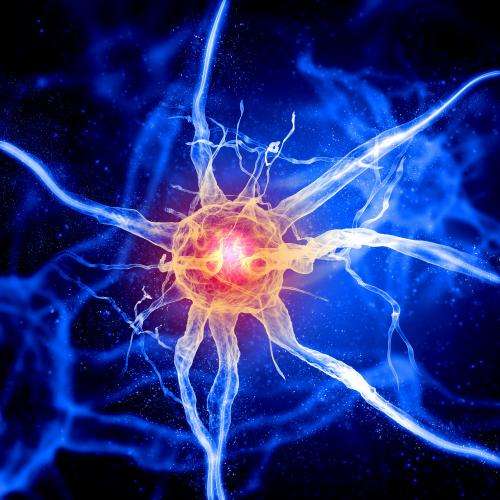Protein mimic shows promise as tissue engineering glue

Researchers have demonstrated the potential of a "synthetic protein mimic" to promote the adhesion of brain cells in a laboratory setting. This feat could help overcome a major challenge in nerve tissue engineering.
To study brain metabolism, scientists typically isolate brain cells from an organism and then culture them in the laboratory. It can be challenging, however, to provide brain cell cultures with the necessary adhesion promoters to facilitate the attachment, spreading, growth and development of these cells.
Improving cell adhesion to biomaterials is also a major challenge in nerve tissue engineering. Cell adhesion is crucial for the development of implanted neural prostheses, such as cochlear implants, as well as blood glucose and other implanted biosensors.
One approach for promoting nerve cell adhesion in laboratory settings is to coat the surfaces of negatively charged cell membranes with positively charged synthetic proteins. However, most synthetic proteins are toxic to living cells and need to be washed off before cell suspensions are spread onto a new plate. They are also unsuitable for applications used inside a living organism.
Within the central nervous system, proteins such as collagen and laminin promote the regeneration, differentiation, adhesion and migration of nerve fibres. Both proteins contain a specific sequence of amino acids (the building blocks of proteins) that can mediate the adhesion of many cell types, including nerve cells.
AGMA1 is a synthetic protein mimic that is biocompatible, water soluble, positively charged, and contains an amino acid sequence similar to that found in collagen and laminin. Non-toxic to living cells, AGMA1 hydrogels have been tested successfully as tubular scaffolds for the regeneration of sciatic nerves in rats. What's more, AGMA1 is much easier to prepare on a large scale using relatively low-cost materials and thus is less expensive to make.
Reporting in the journal Science and Technology of Advanced Materials, University of Milan scientists tested the potential of AGMA1 to promote the adhesion, proliferation and differentiation of primary brain cells cultured directly from animal brains. When different primary cell types from rat brains were cultured on AGMA1, the novel protein's performance was comparable to that of conventional substrates made from commonly used synthetic proteins.
The research team is currently investigating whether AGMA1 can be used as a non-toxic carrier of nucleic acids as well as its ability to deliver proteins to cells. Future plans include the study of AGMA1 hydrogels as scaffolds for various bioengineering applications.
Journal information: Science and Technology of Advanced Materials
Provided by University of Milan





















